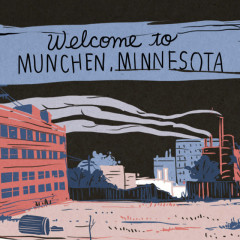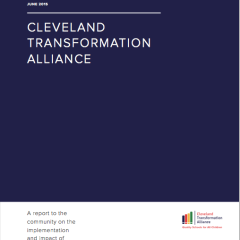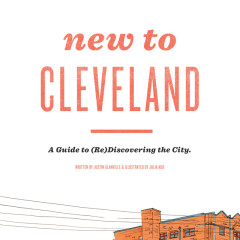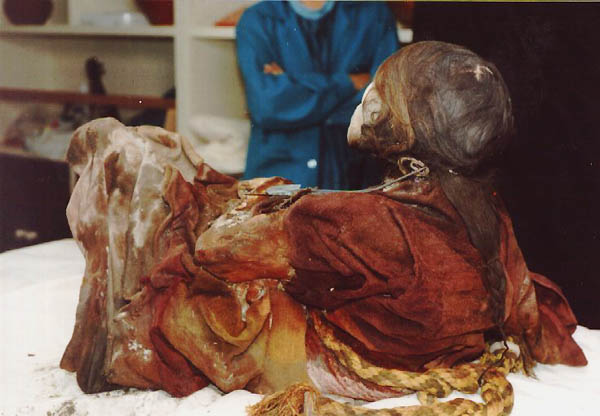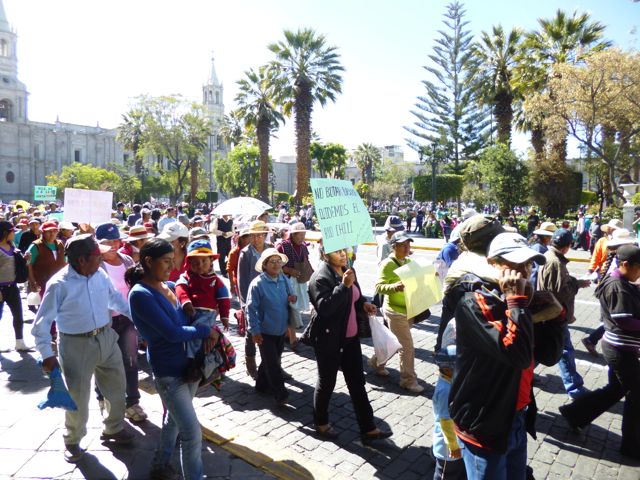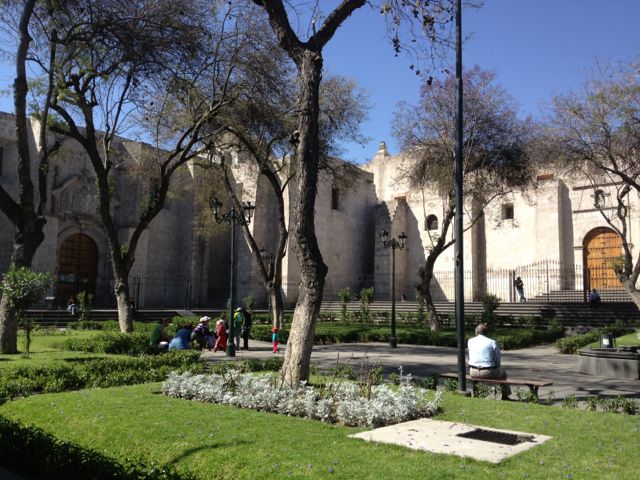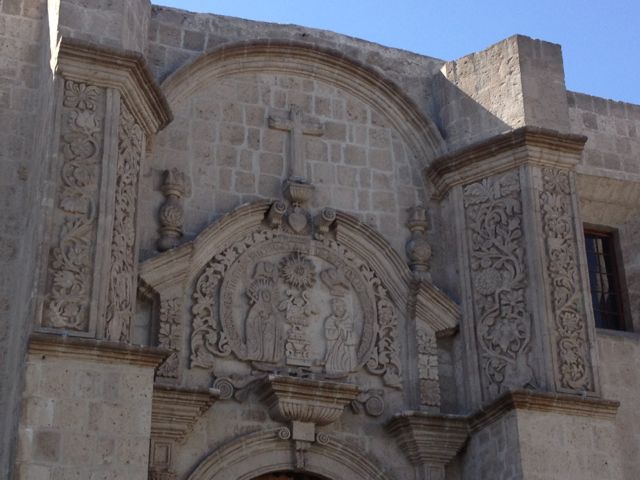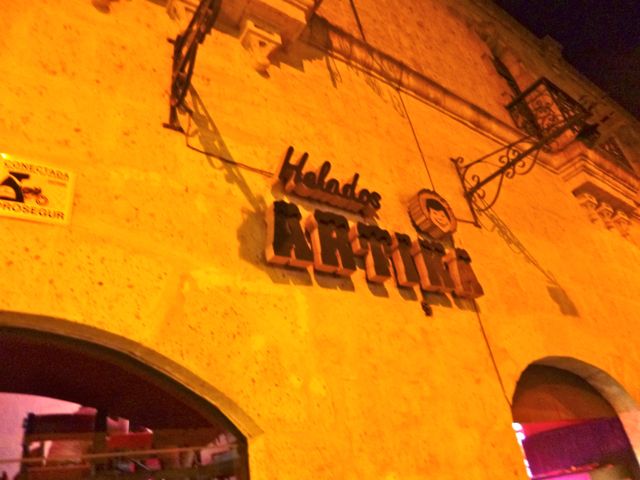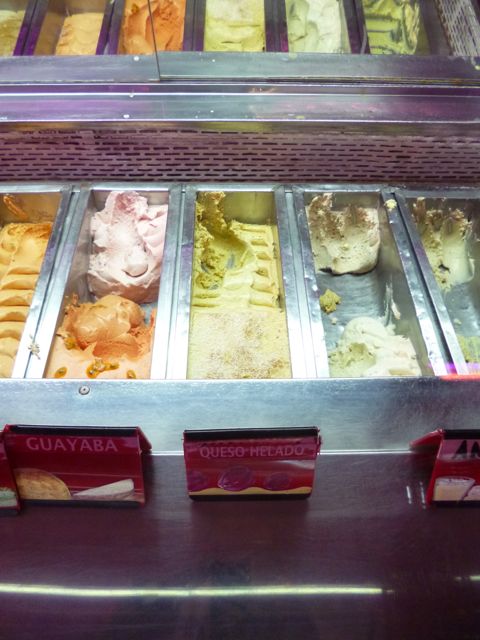After the Santa Catalina Monastery, Arequipa’s second-most famous attraction is Juanita the Mummy. Housed at El Museo Santuarios Andinos, Juanita is a 12- or 13-year-old Inca girl who was the victim of human sacrifice sometime in the middle of the 15th century. (I say “victim” because even though the museum’s displays and tour guides kind of apologize for the sacrifice by saying she was chosen from birth, that it was an honor, etc., I don’t think any 13-year-old has enough volition to choose to die.)
She was discovered in 1995 near the top of Mount Ampato, outside Arequipa — at an elevation about as high as Mount McKinley. The team that found her was actually able to do so because the ice on top of the mountain had partly melted due to the eruption of another volcano nearby, allowing them to climb and dig. Two other children — a boy and another girl, both younger than Juanita — were also found nearby, less well-preserved and of apparently lower social status, to judge from the offerings found with them, and so less famous. They weren’t artificially mummified — they were simply frozen in the mountain’s ice.
The museum doesn’t allow photos, so here are a couple of stock images:
The way the museum is set up is a bit reminiscent of an old-time circus side-show act. You go in, pay your admission (S/20, about $7) and then watch a video about the discovery. Then you’re led through several exhibition rooms with artifacts found with the sacrificed children, culminating with the room containing Juanita herself. She is kept in such dim light that it’s difficult to see her.
Still, to see this tiny, contorted girl in her humidity-and-temperature-controlled glass chamber raises tantalizing questions — ones that we’ll never be able to answer. What exactly did the Inca think this act would gain them? To what heights of crisis must they have been driven to commit such an act? What was the nature of that crisis — starvation? War? Most hauntingly, what was going through the little girl’s head as she marched up the mountain? (She’s named, by the way, after the archaeologist who found her: Johan Reinhard.)
In her stomach were found remains of coca leaf (coca is the plant from which cocaine is made) and chi-cha (corn beer), so it’s likely that she was at least semiconscious when she was bludgeoned across the right side of her forehead: A single, precise blow. It’s sobering to know that Juanita is one of 15 child sacrifices found to date in the Andes.
I gazed at her for a few minutes with the five or so other members of my tour group. I could just barely make out her white, protruding teeth, the fetal shape of her ice-shrunken body. Her knees sharp. Even now, she looks like she’s huddled, shivering from the cold. (Tip: Juanita herself is only on display May through December. The rest of the year they bring out one of the B-list mummies.)
“Watch your step as you leave,” our tour guide told us. “Your eyes will need time to adjust to the light.”
Dutifully, we filed out, blinking.
I encountered a massive protest in the Plaza de Armas, apparently against the contamination of the Rio Chili, the river that runs through Arequipa. I’d find out later from my Spanish tutors that the marchers were protesting irresponsible mining and agricultural practices outside the city. (Arequipa lies in a major mining region, with the main minerals being copper, silver and gold.) Cecilia, one of my tutors, expressed skepticism about the marchers’ true motives. She thinks they’re mostly people jockeying for a new water treatment plant because they want jobs. In either case, yet another example of people in South America taking to the streets, hoping for change.
I had about an hour and a half before my Spanish class started that afternoon, and I decided to go for a run. I’ve been in Arequipa two days now, so I figured I’d acclimatized enough to the altitude to give it a shot. Plus, as always, running would be a good way to see more of the city, including the less touristy parts outside the center.
Running in this city’s climate was delightful. There’s so little humidity that I barely sweat, even after 45 minutes. The outer barrios I ran through, Yanahuara and Cayma, sported newer buildings than the center, but were just as clean and apparently well-to-do. The only hint of chaos was on the main drag, El Ejercito, as packed-to-bursting microbuses bullied their way past smaller cars and taxis in clouds of black smoke. Every once in a while, an arm would reach from a bus window, exchanging a coin for a soda or package of cookies from one of the vendors lining the sidewalks.
On my way back, I went through the lovely Plaza de San Francisco:
Check out the detailing on the church:
On my way to Spanish class, I bought some puffed-and-roasted corn kernels from a street vendor. He had a number of different types, but I asked him for his favorite and he gave me these.
Back at my hotel, I discovered that the key to my room no longer worked. This is the second time this trip that’s happened. The first time was in Valpo with Dan. Is there a sign to be seen here? TBP — to be pondered. Because I definitely don’t do enough pondering already.
I ate dinner at another vegetarian restaurant, this time Mandala at Jerusalen 207. They were serving a fixed menu: Soup with dumplings, and seitan with roasted potatoes and salad, for a grand total of S/7 ($2.50). Once again, I was the only soul in the restaurant. Apparently Arequipenas don’t eat dinner — not even the tourists.
I gleefully destroyed any feelings of virtue about dinner by stopping by the city’s famous ice cream shop, Helados Artika, to order their specialty flavor: queso helado (cheese ice cream!) seasoned with coconut and cinnamon. I ate it in the gorgeous plaza of La Campania, a Jesuit church next door. Yes, it was heaven.
I still have this feeling of this city being 100 percent delightful. Partly because it is, and partly because it’s providing me with such a cheerful contrast to mournful Easter Island. Don’t get me wrong: I don’t think I’ll ever forget a single moment I spent on Easter Island. I’ll probably keep reading and writing about it for years. But the place I’m already planning on coming back to, I hope with Dan? Peru.






